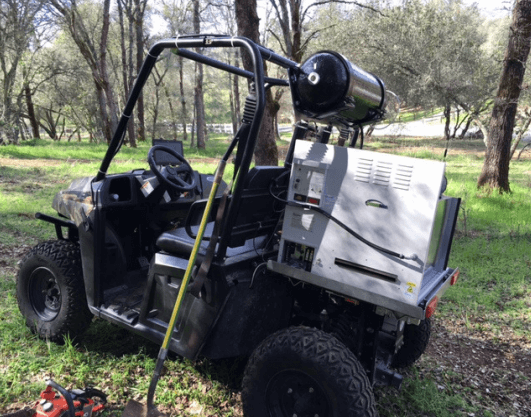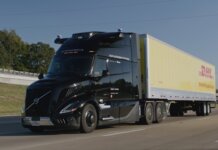Ascend Energy and fuel cell manufacturer Atrex Energy have released the results of their joint project to demonstrate the benefits of using an oxygen-based ceramic fuel cell as part of a hybrid electric vehicle to save money, reduce fuel use and eliminate air pollution.
As reported, Ascend Energy worked with Tructronics Inc., idea Solutions Design and JB Mechanical to integrate and install a commercial 1000 Watt Atrex Energy fuel cell power generator fueled with compressed natural gas (CNG) in an all-electric Polaris Ranger ATV.
With funding from the California Energy Commission’s Energy Innovations Small Grants Program, the companies undertook the demonstration to dispel many of the myths about the use of this type of fuel cell in a vehicle.
The company says most attention on developing fuel cell vehicles has centered on hydrogen PEM technology. Ceramic fuel cells, in contrast, do not require hydrogen and can operate on conventional CNG or propane – a significant advantage in cost and simplicity. However, Ascend Energy notes, ceramic fuel cells are thought to be too fragile to use this way.
After putting the vehicle through its paces multiple times on a rugged off-road vehicle course, the company says this myth was shattered. The fuel cell showed no damage – primarily because the Atrex fuel cell design is based on inherently strong tubes rather than thin sheets of ceramics.
The demonstration also showed the vehicle could be the most economical form of a fuel cell hybrid in terms of fuel cost. A conventional vehicle with a gasoline engine would use $9 of fuel to go 100 miles. A hybrid electric-type vehicle would require $7.50 worth of fuel. A hydrogen fuel cell car at today’s prices of hydrogen would use $20 of fuel for the same trip. An equivalent ceramic fuel cell vehicle would use only $6 worth of fuel, the company says.
When tested by an independent lab, the demonstration vehicle had no detectable NOx or SOx emissions.
“The project clearly provided a proof of concept that a ceramic fuel cell integrated into an electric vehicle would be beneficial to the public,” says Ken Pearson, president of Ascend Energy. “Using CNG, the SOFC more than tripled the run time of the electric vehicle and did so with 100 percent reliability.”
“This could be a viable supplement to a Hydrogen Highway to get the benefits of fuel cell vehicles,” states Cary Bullock, CEO of Atrex Energy. “We already have an extensive statewide CNG fueling station network. Since most hydrogen comes from natural gas anyway, using the fuel directly could avoid the cost of extracting and delivering the hydrogen. It is an idea to be looked at more closely after our demonstration.”
According to the companies, the ATV was chosen because ATVs are commonly used in California farms, ranches and orchards as utility vehicles, but the gasoline-fueled versions make a significant contribution to poor air quality in the farm regions of the state.
An attempt to replace these gas- and diesel-fueled ATVs with battery-electric versions was unsuccessful due to severe limitations on range. With an onboard fuel cell recharger, the range was increased 350%. In addition, the companies say the power requirements of the small ATV were a good match for the available commercial fuel cell.






